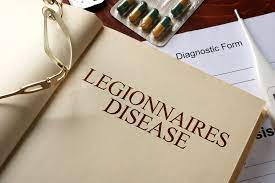In 1976, the United States experienced a widespread outbreak of Legionnaire's disease, a severe form of pneumonia caused by the Legionella bacteria. This outbreak, which originated from a hotel in Philadelphia, served as a wake-up call for public health officials and led to significant advancements in preventing, diagnosing, and treating the disease. The events of that year underscored the importance of vigilance and proactive measures to protect public health. The Outbreak and Investigation: The outbreak began during a convention held at the Bellevue-Stratford Hotel in Philadelphia in July 1976. Attendees started falling ill with a mysterious respiratory illness characterized by high fever, chills, cough, and muscle aches. The disease quickly spread, affecting not only convention attendees but also hotel staff and guests. As the number of cases increased, public health officials launched an investigation to identify the cause and prevent further infections. Discovery of Legionella Bacteria: During the investigation, scientists discovered a previously unknown bacteria, later named Legionella pneumophila, as the causative agent of the outbreak. They found that the bacteria thrived in warm water environments, such as cooling towers, hot tubs, and plumbing systems. This groundbreaking discovery paved the way for understanding the transmission and prevention of Legionnaire's disease. Public Health Response and Preventive Measures: In response to the outbreak, public health officials took immediate action to control and prevent further infections. They implemented strict monitoring and maintenance protocols for water systems in public and private buildings, including regular disinfection and temperature monitoring. These measures significantly reduced the risk of Legionella bacteria proliferation and subsequent disease transmission. Advancements in Diagnosis and Treatment: The 1976 outbreak also stimulated advancements in diagnosing and treating Legionnaire's disease. Medical professionals developed more effective diagnostic tests, such as urine antigen tests, which allowed for quicker identification of the Legionella bacteria. Additionally, improved treatment protocols, including the use of antibiotics, respiratory support, and fluid management, resulted in better outcomes for patients. Legislative and Regulatory Changes: The Legionnaire's disease outbreak prompted the implementation of new legislation and regulations to ensure the safety of public water systems. The U.S. Congress passed the Safe Drinking Water Act in 1974, which established regulations for monitoring and maintaining the quality of drinking water. Additionally, the Centers for Disease Control and Prevention (CDC) developed guidelines for preventing Legionella growth in building water systems. Impact on Public Health Practices: The 1976 outbreak had a profound impact on public health practices, leading to a greater emphasis on surveillance, prevention, and response to infectious diseases. It highlighted the importance of collaboration between public health agencies, healthcare providers, and water system operators to detect and control outbreaks effectively. The incident also spurred research into other waterborne diseases and the development of strategies to mitigate their impact. Legacy and Continuing Challenges: The Legionnaire's disease outbreak of 1976 left a lasting legacy in the field of public health. The incident served as a catalyst for improving water system management, diagnostic capabilities, and treatment protocols for Legionnaire's disease. However, challenges remain, as sporadic outbreaks still occur, highlighting the need for ongoing vigilance and adherence to preventive measures.
1976 U.S.A. Legionnaire’s Disease
